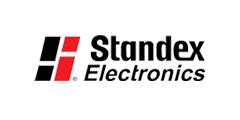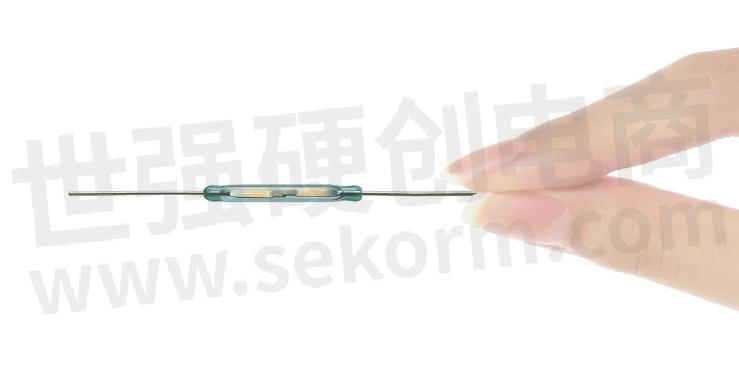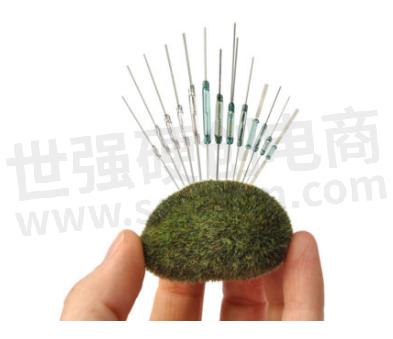Why and How to Choose Standex Electronics Reed switches

It’s no secret: available in hundreds of sizes and shapes, crucial in dozens of industries, Standex Electronics Reed Switches can outperform the competition. Moreover, they’re equipped to survive billions of operations in even the most extreme areas. It continues to grow in popularity as the basis in relays and sensors for switching, detecting, and counting applications across the globe. Why wouldn’t you want Standex’s advanced reed switches for your own products?

As a technology, the Reed Switch is unique. First, at its core is a glass-to-metal hermetic seal, which encloses the two ferromagnetic reeds in a glass envelope and protects them from the environment. And, as a result of this simple design, the Reed Switch can operate in the harshest spaces. In addition, it requires no direct contact when part of a reed sensor.
Second, Standex Elecronics reed switches are rigorously tested to ensure the quality of our manufacturing processes and resulting products. Moreover, we can also customize any switch to your own design! Custom designs include value-add services such as PCB assembly, epoxy sealing, conformal coating, and wire termination.
As new, improved designs create the demand for more sensing needs, it’s time for a switching solution that makes sense—for product longevity, for power efficiency, and for your unique needs!

Why Standex Electronics Reed Switches
Check out the below list of unique reed switching features and you’ll see just how diverse their use can be.
Simple design
No wearing parts
Billions of reliable operations
Switch up to 10,000 Volts
Ability to switch or carry as low as 10 nano- Volts without signal loss
Withstand shocks up to 200 Gs
Contact resistance (on resistance) typical 50-100 milliOhms (mΩ)
Ability to switch or carry as low as 1 femto- Amp without signal loss
Handle vibration of 50 Hz to 2000 Hz at up to 30 Gs
Extensive parametric testing
Hermetically sealed to perform in extreme and harsh environments
Draws no power in the normally open state
Switching currents up to 5 Amps
Switch or carry up to 7 GigaHz with minimal signal loss
Isolation across the contacts up to 1 x 1015 Ω
Optional latching feature
Can operate within 100 µs
Pull-in and drop-out offered in milliTesla
Operates over extreme temperatures
Parameters to Consider When Choosing a Reed Switch
Now, consider the below list of switching parameters when selecting the right reed switch for your needs. Or let our engineers assist you in making the right choice.
Pull-in (the points where the contacts close)
Drop-out (the points where the contacts open)
Hysteresis
Contact resistance
Dynamic contact resistance
Switching voltage
Switching current
Carry current
Stray capacitance
Common mode voltage
Switching wattage
Breakdown voltage
Insulation resistance
Dielectric absorption
Where reed switches reside
Due to their extensive features, the base component of the below product is the reed switch.
Reed sensors
Reed relays
Proximity sensors
Fluid Sensors – Flow, Liquid Level and Conductive
INDUSTRY APPLICATIONS
Reed switch sensors and relays are fit in any device that needs to detect movement, rotation, and liquid level. Standex Electronics reed switch products serve in Automotive, Aviation, Military, Medical, and Test Equipment. More importantly today’s emerging markets are calling upon reed switches as a low power solution in Electric Vehicles, LED, Solar and Photovoltaics.
Conclusion
In summary, compared to mechanical switches, the reed switch has many advantages. First, it requires no switching load while effectively sensing from up to 44 mm away. In addition, you can adjust the switch hysteresis to fit your specific design needs. Conversely, working with mechanical switches, you’re limited to differential travel. Finally, with no wearing parts, the reed switch can also outlast mechanical switches. And, last an unusually long life in the billions of operations.
- +1 Like
- Add to Favorites
Recommend
- Reed Switches Are Quickly Becoming the New Magnetic Sensing Technology of Choice for Low Power Designs
- Latest Littelfuse Ultra-Miniature 7 mm Reed Switches Provide High-Reliability, Longer Life Cycles
- Reed Switches vs. Hall Effect Switches,Two Sensor Solutions for Technical Applications
- Latest Littelfuse Sub-miniature 12.7mm Reed Switches MATE-12B Provide High-Reliability, Longer Life Cycles
- Failure Examples in Dynamic Contact Resistance Testing for Reed Switches
- LS03 Series Standard Liquid Level Sensor for Horizontally Mounting, Feature Magnetic Floats which Activate Reed Switches When the Liquid Level Rises or Falls
- What Are the Advantages of the Hall Switch Over the Reed Switch?
- Standex Electronics Announces the MK33 SMD Reed Switch Series: Optimized to Switch High Power in a Small Footprint
This document is provided by Sekorm Platform for VIP exclusive service. The copyright is owned by Sekorm. Without authorization, any medias, websites or individual are not allowed to reprint. When authorizing the reprint, the link of www.sekorm.com must be indicated.





























































































































































































































































































































































































































































































































































































































































































































































































































































































